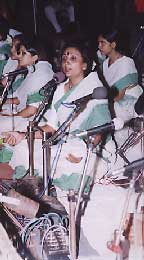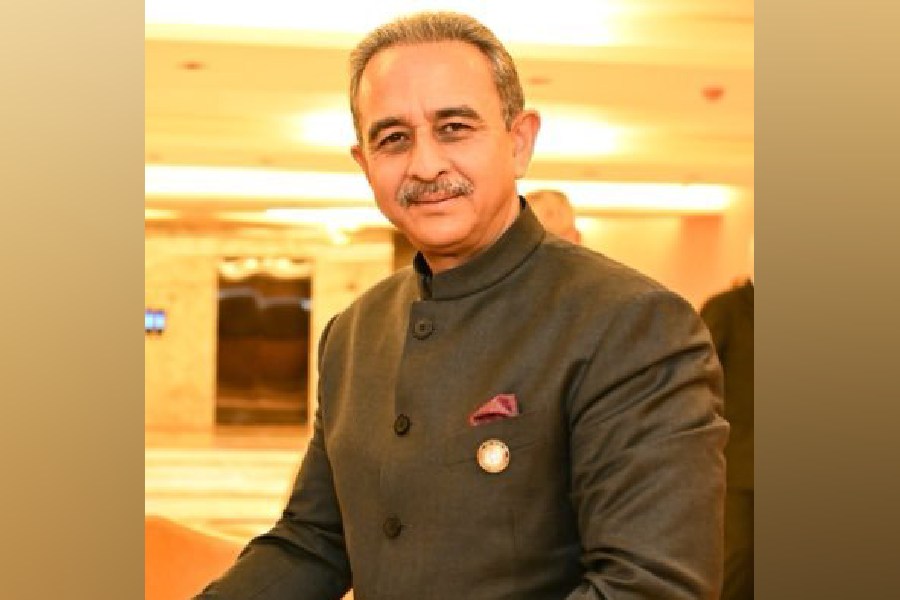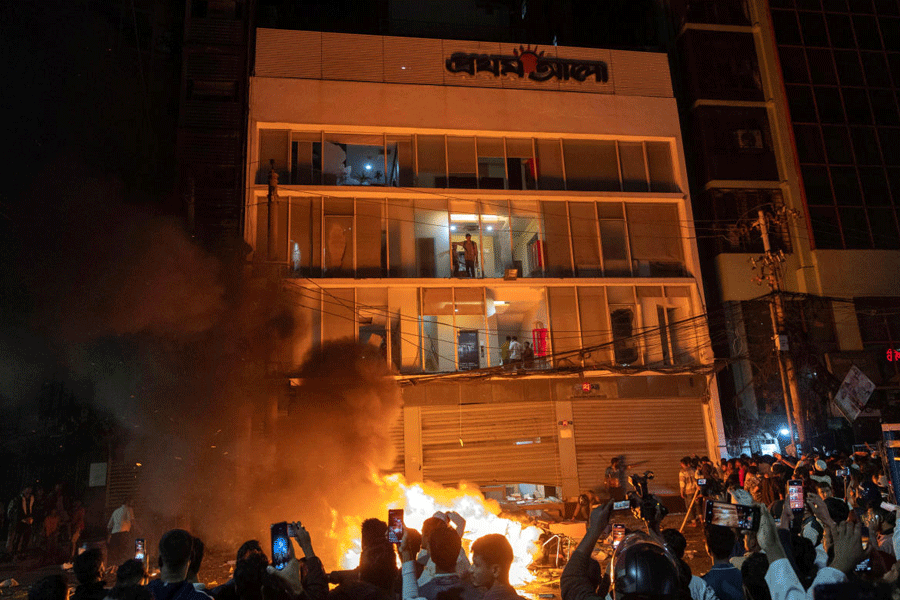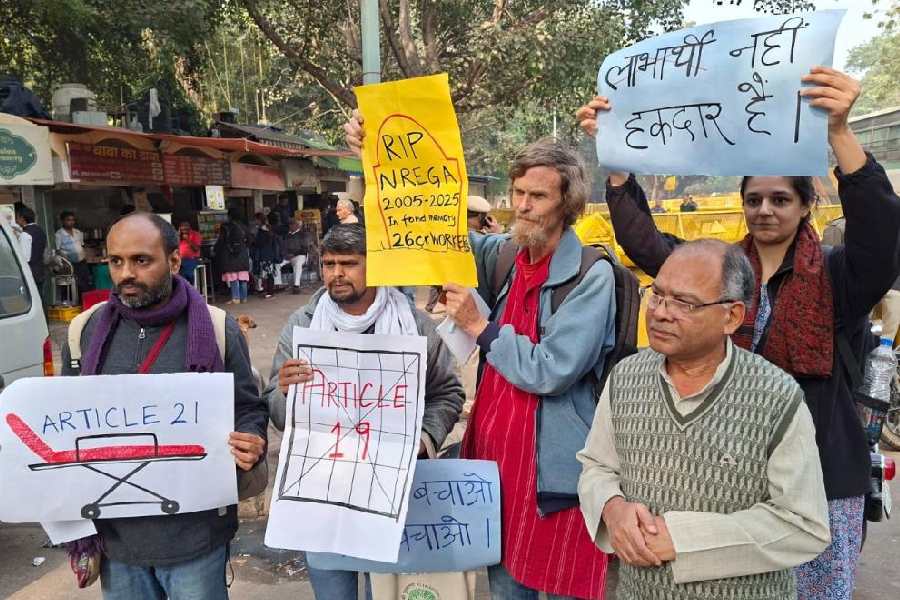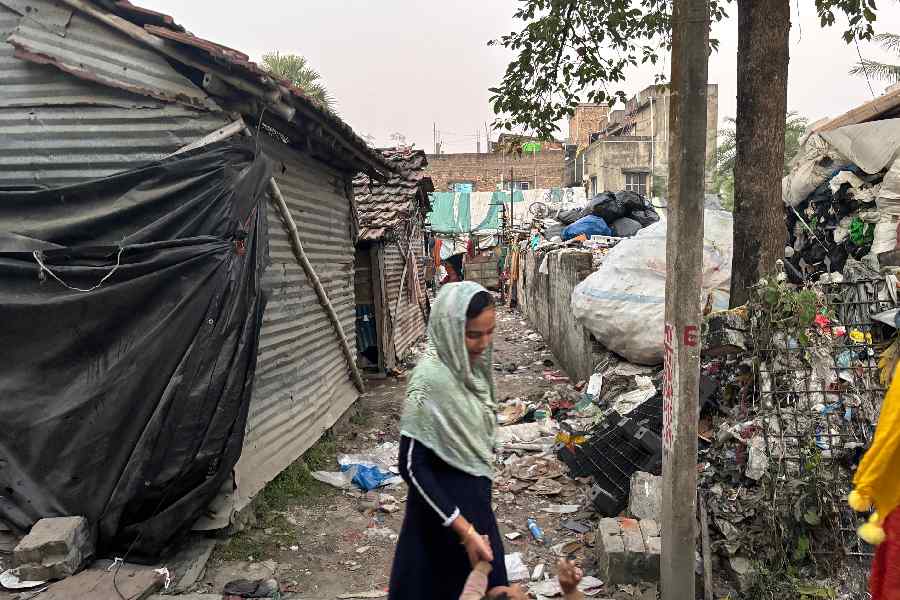 |
| Dakshinee’s Aditi Gupta (in the middle) |
Contemporary readings unearth many politically incorrect observations that Tagore once made. While describing the seasons he drew an analogy with the caste system! This elitism came across when those observations were read out as a prologue to Madhuritu, a Dakshinee production (Kalamandir, June 11) showcasing his seasonal compositions.
The grand design conceived a pastoral seasonscape on the lines of a masterplan that Tagore laid out in bits and pieces. To its credit Dakshinee has integrated those fragments into a holistic experience. The two-hour-long presentation unfolded with Tagore’s cosmic vision in musical terms. Each of the seasons was elaborated in a subtle interplay of song and dance till the springtime gaiety took over, ensuring a magical end.
The singers were trained to perfection by Sudeb Guhathakurta. Rank newcomers like Sreetama Gangopadhyay and Rohini Roy Chowdhury made an impression. The former needs to work on her lower tetrachord though. The latter was pleasantly engaging in Chhaya ghanaichhe bane bane. Among the advanced students, Surajit Guhathakurta gave a vastly improved performance in Aji dakshin pabane, as did Alakananda Roy in Tumi kichhu diye jao. A personal touch was evident in Aditi Gupta’s seasoned interpretation of Basanti hey bhuvanmohini, the finale. Only pity is that Samik Pal, Saikat Sekhareshwar Roy and Srabanti Basu, three of the brightest Dakshinee products in the recent past, have reached a plateau.
New arrivals on the music scene do not make news any longer. Groups and bands keep mushrooming by the dozen, and not many put in the required effort to create quality music. Exceptions, however, prove the rule. Sonali Choruira (Golden Sparrows) is a fledgling group in the truest sense of the term. The sparrows happen to be an all girls’ team of about a dozen members — age ranging from six to early teens.
They call themselves Chhoto Gaanwallah — young crusaders raising a storm with melodious, sincere and sensible music. Bubbling with enthusiasm and breaking new ground with gusto, the group performed at Sisir Mancha on June 12, singing effervescently about this city, their own growing pains, their joys, aspirations and the misgivings that sometimes cloud their squeaky-clean vision.
The group experimented with a wide spectrum of tunes and rhyth-ms. Attractively simple, the tunes were nourished by subtle touches of Bengal folk and Western pop — a heady mix of it all producing numbers like Chocolate cheona and the more sombre Megher opor aachhey ki ma. The lyrics provided an added thrust — dealing thoughtfully and employing a fair amount of child-like sensibility — with issues that shape a young mind. Songs like Humpty dumpty also questioned the changing perspectives and priorities in a girlchild’s world, where television has partly replaced the doll’s house.

